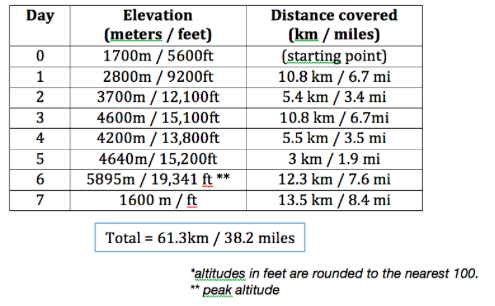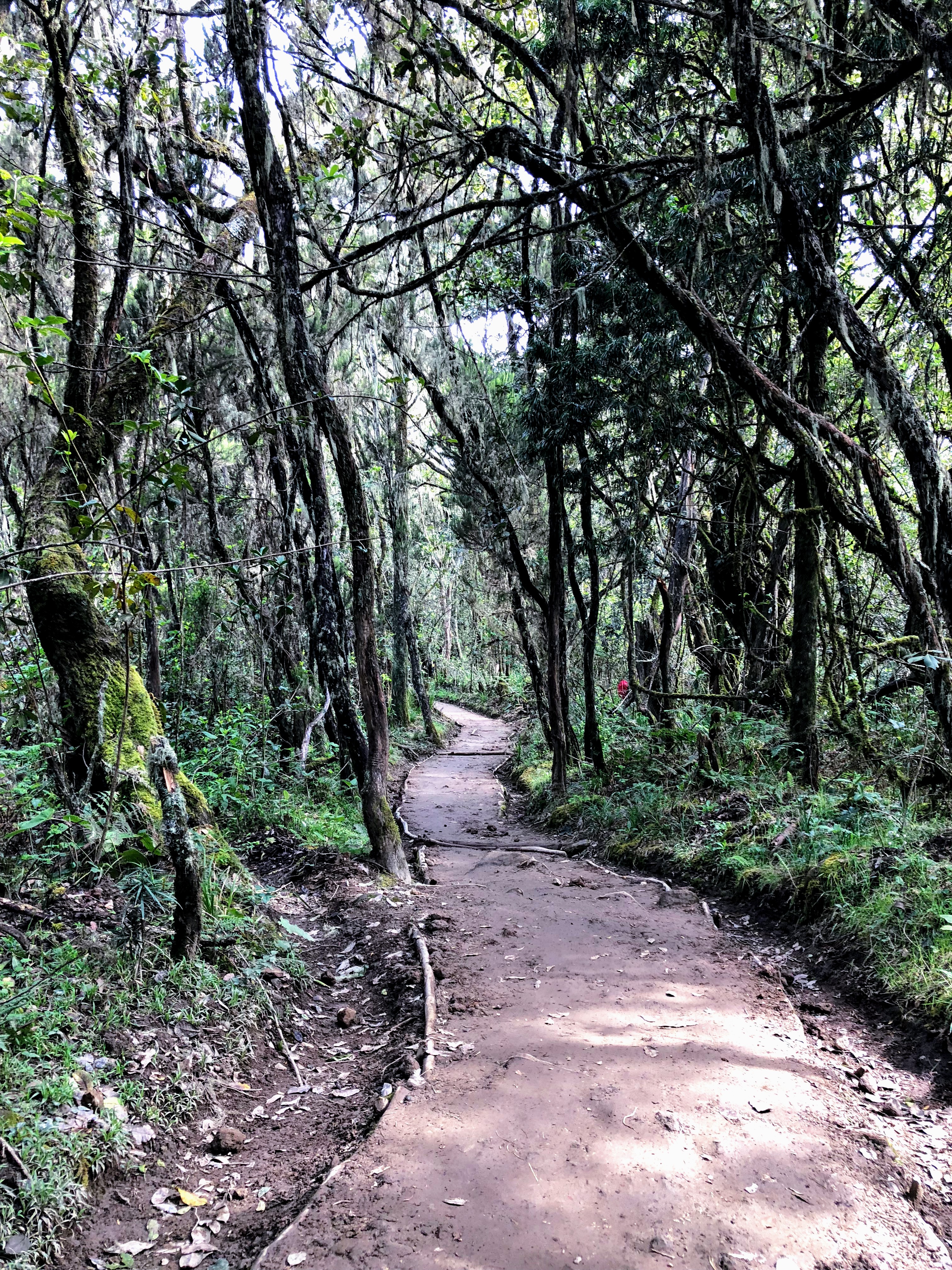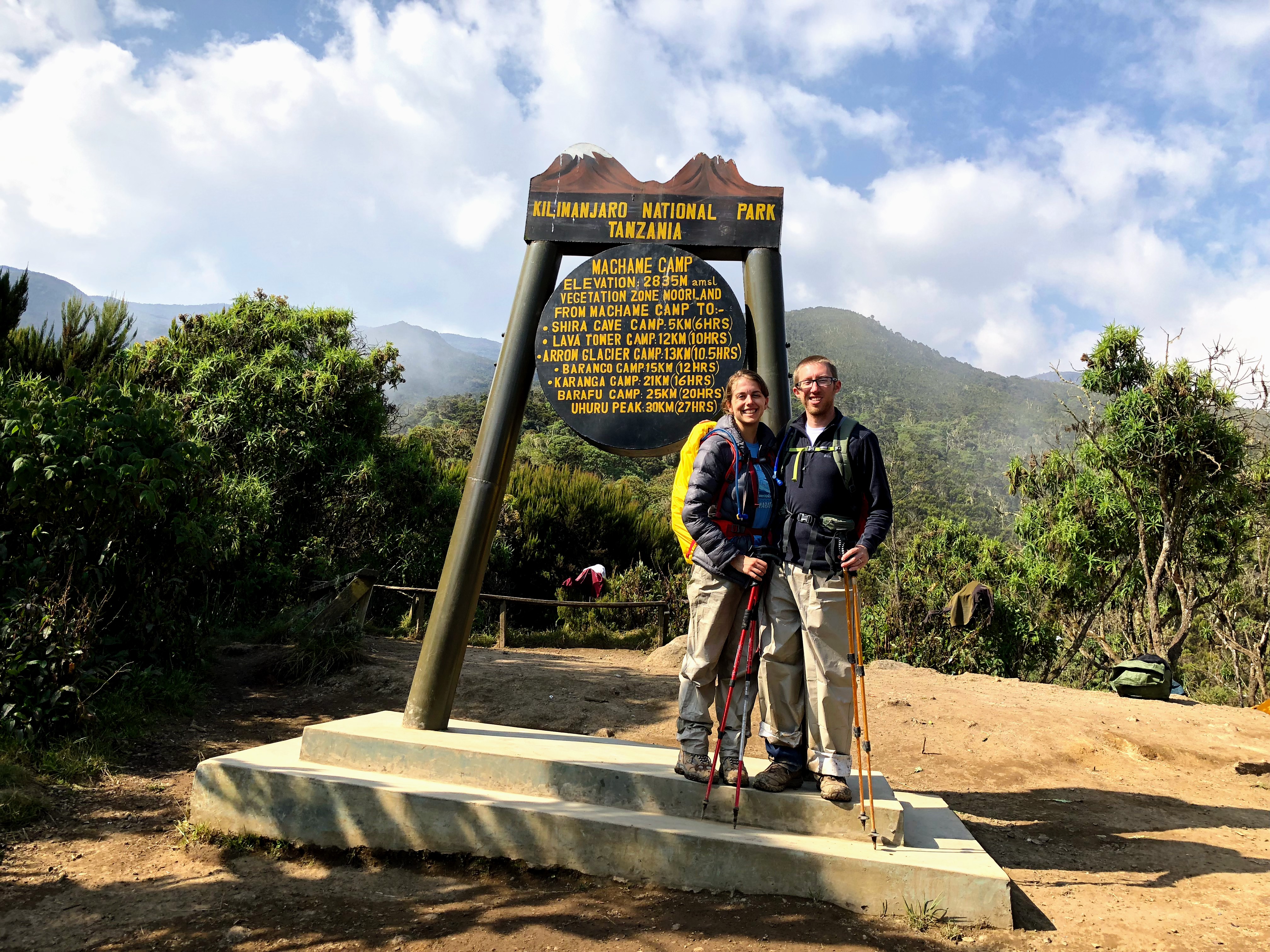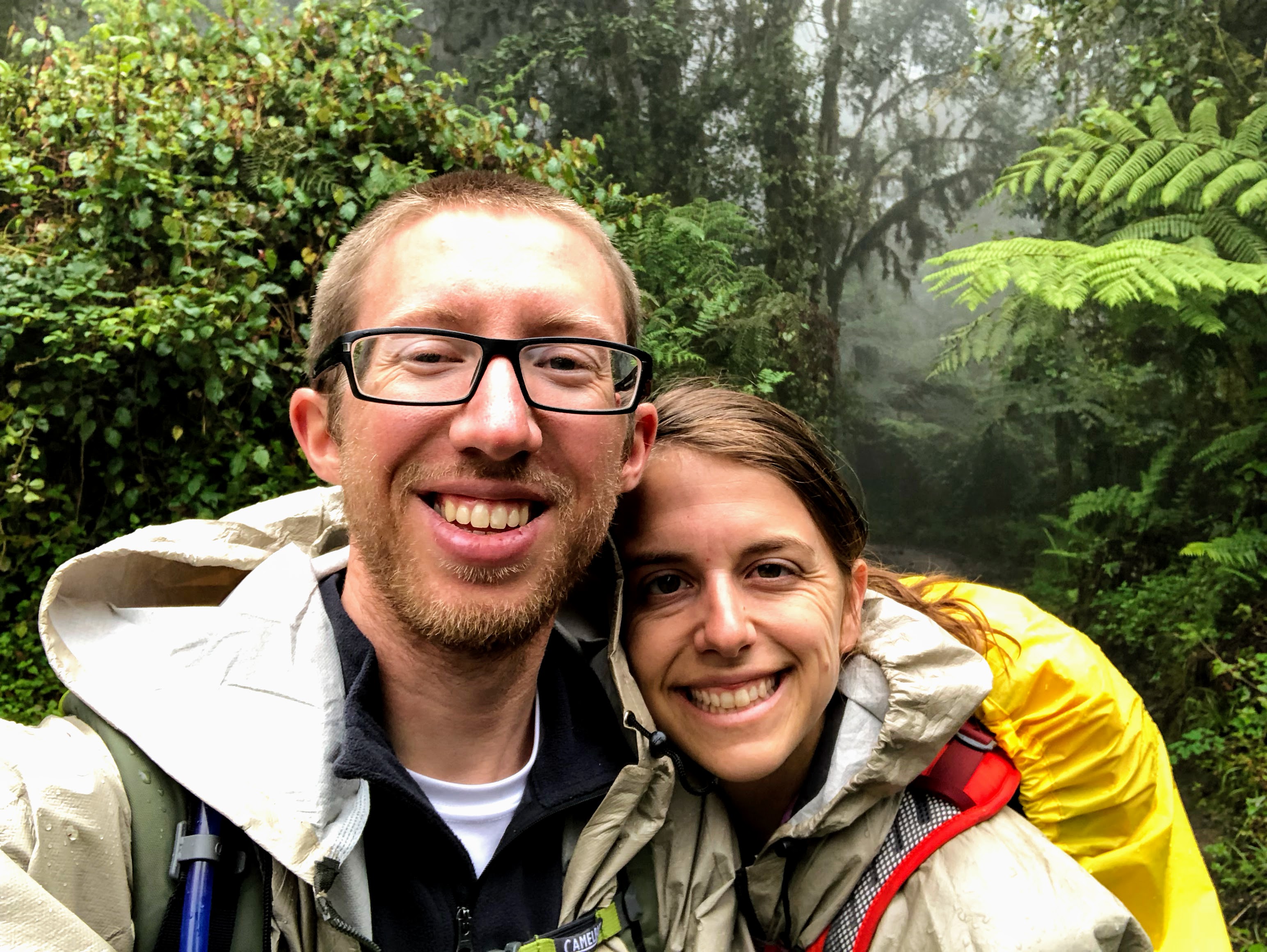At 19,341 ft, we were way above the clouds, among incredible ice cliffs, at the highest point in Africa, atop one of the world’s largest volcanoes, without supplemental oxygen. We took the seven-day, 40 mile, Machame route to get the top, known as “the roof of Africa.” We had nothing to prove, just open to receive what the mountain had to offer. Our trek took us through the Kilimanjaro’s five distinct climate zones: we began in a magnificent, dense rain forest, passed through the heather zone where the trees became shorter and rocks became bigger, traversed through moorland, across alpine desert and up desolate scree slopes, to the arctic ice cap summit.
The strategy to summit Africa’s tallest mountain is the same way I approach any challenge in life: one step at a time. Difficulties will arise, unexpected circumstances will happen, and we will keep putting one foot in front of the other. As we became immersed in the rhythm of our stride, any doubts became irrelevant: we were on our way.

Day 1 began in a thick, foggy mist and took us through magnificent, dense rainforest, starting at an altitude of 1700m (5600 ft). The moss draped from the tall sycamore trees and streams of light fell through the canopy of branches and leaves above us. We ate our boxed lunch (a veggie pie, jelly sandwich, sweet banana, apple juice, and Snickers candy bar) on a fallen tree trunk surrounded by ferns and flora of vibrant greens. The fog lifted as we ascended, eventually the rain stopped, and we marched through this magical fairytale forest dream for 10.8 km (6.7 mi) until we arrived at Machame Camp (altitude: 2800m, or 9200 ft).

Hakuna Matata
The campsite was in a small clearing of trees and we got our first view of the summit. I took a full breath and felt the magnitude of our undertaking. Our guide caught me looking upwards and pointed at tomorrow’s path, made smaller by its distance from us. He explained how we’d actually go further from the summit before getting closer, then we’d then wrap around the other side of the mountain before going up to summit. I nodded. How very much like life: non-linear, walking away from your goal before you can move towards it. But a visual of the route helped me mentally prepare for the journey ahead. Seven days outside in progressively higher altitudes sounds daunting, but I knew each day’s hike was within my capability.

Day 2 brought us further away from the mountain, but got us up to an altitude of 3700m (12,100 ft). The steep ascent through short trees and big rocks took us to Shira Cave Camp. We finished 5.4 km (3.4 mi) by lunchtime and spent the day above the clouds. Later in the afternoon we went on an easy acclimatization walk: 30 minutes up, 30 minutes down to help our bodies continue to adapt by exposing ourselves to higher altitudes then coming down to recover.
Back at camp, a song floated through the air and caught my ears. We saw other crews in a circle; singing, clapping, dancing.
“Kilimanjaro, mlima mrefu sans (Kilimanjaro, long mountain journey)…
Ewe nyoka, ewe nyoka (As a snake, as a snake)
Ewe nyoka, mbona waninzungukaa (As a snake, it winds all around)”
The crowd of hikers grew around them, as their joy emanated throughout the campsite and they continued singing:
Kilimanjaro, hakuna matata (Kilimanjaro, there is no problem)
Tembea pole pole, hakuna matata (Walk slowly, slowly, no problem)
Utafika salama, hakuna matata (You’ll get there safe, no problem)
Kunywa maji mengi, hakuna matata (Drink plenty of water, no problem).”

“Hakuna matata” isn’t just a catchy tune from The Lion King; it is the vibe of Africa, and one I hope stays with me long after the trip ends.
It’s not that worry and uncertainty doesn’t exist for them; it’s that they move toward it with open hands. You make a decision and take a step towards it. You could be wrong, but you can always adjust your course as you go. Be on your way. Keep moving. Slow is a good speed. (And it’s a lot better than stagnant). And so we carry on, with “hakuna matata” on our hearts and smiles on our faces.
Read about the next part of the journey here, and about our summit experience here.




